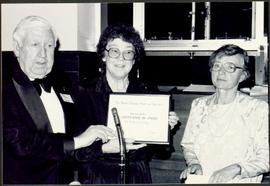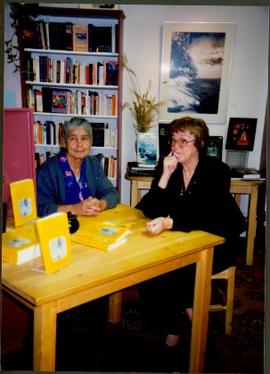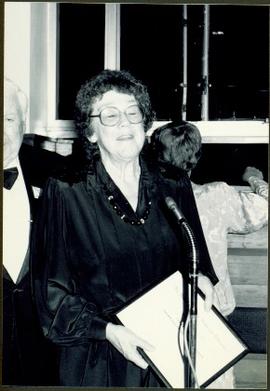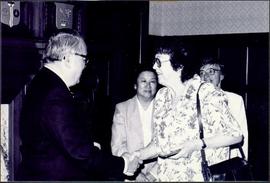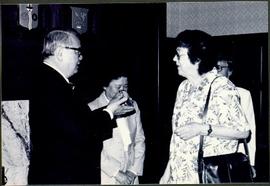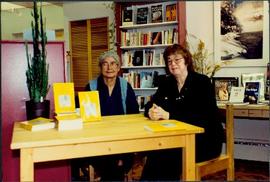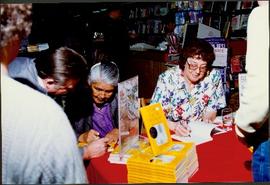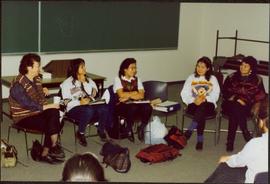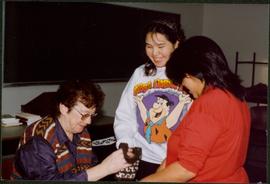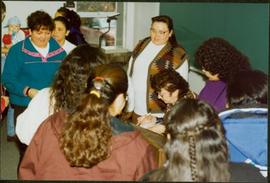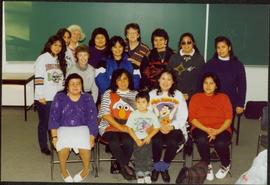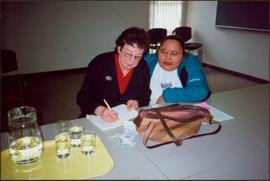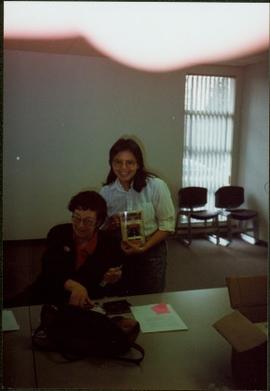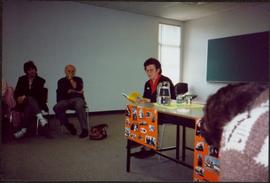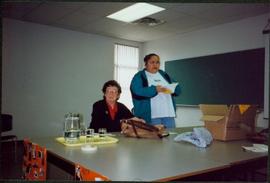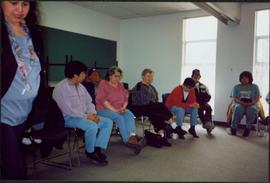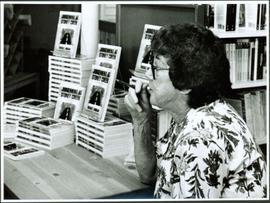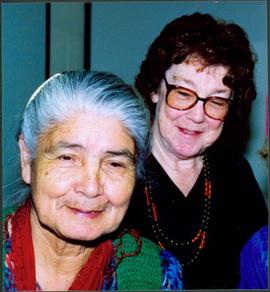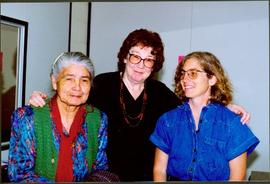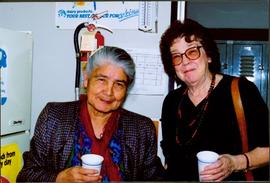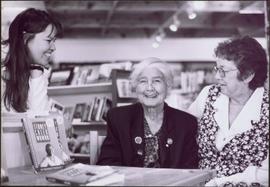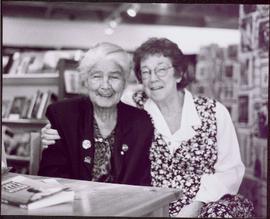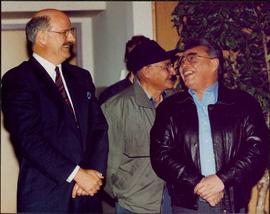Item is a recording of an audio segment from CBC Radio in which CBC Reporter Karen Tankard provides a documentary report on the CBC Radio program Daybreak on conditions on the Stoney Creek reserve, outside of the farming community of Vanderhoof, 15 years after the inquest into Coreen Thomas’ death in Stoney Creek, BC. Tankard interviews community residents about the inquest and discusses the state of racism in the town of Vanderhoof, BC in 1991 and concludes improvements have not been made.
Audiocassette Summary
Scope and Content: Tankard recalls that Maclean’s Magazine had written at the time of the inquest that “Vanderhoof was one of the most racially prejudiced towns in BC”
Tankard recalls Inquest of Coreen Gay Thomas’ death and includes archived interviews from the 1976 inquest. One Vanderhoof woman says people are putting “racial connotations’ around what is going on in Vanderhoof and that she has ‘many friendships’ with native people that ‘is not unusual’ While Minnie Thomas, a Band Councillor in 1976, discusses how poor white-native relations are on reserve and criticizes the state of housing and the economy on the Stoney Creek reserve
Tankard then talks to students at a dance on the reserve on Sept 15, 1991; she notes there is no high school for the native students. Native student Kevin Prince notes that “white kids don’t like native kids…”
Jackie Thomas who works at the Band Office states that the feelings of racism still exist here in 1991 Yet Vanderhoof Alderman Jack French states that he “doesn’t see it” in Vanderhoof now. Tankerd notes that Native people recall that the Inquest “shamed” the federal government into making some changes – some municipal services now exist and roads are paved in Stoney Creek, yet there is still 80% unemployment and a rise in drug and alcohol abuse. Gordon Smedley, editor of the Nechako newspaper discusses white-native relations 15 years after the inquest – and argues that a ‘core group’ of drug users impacts the image of natives in the community
Stoney Creek Elder Mary John argues that racism still exists and refers to how in the case of one native woman, who was a university graduate that she could not get even a clerical job in Vanderhoof
Vanderhoof resident Hugh Millard – argues that native residents from Stoney Creek are “not hampered by prejudice, but by a lack of education”
Bruce Smith, high school principal, expresses the challenges of keeping native kids in school; that activities have focused on liaison work with the Band. Smith notes the creation of the Yinka Dene Language Institute as means to keeping native students in school - seen as a ‘storefront’ school for adult education
Tankard notes RCMP also attempting to make changes and have hired a native constable
Yet Alderman Jack French notes there is not a lot of contact between the municipal council and the Stoney Creek Band Council – however argues that the municipality has avoided getting involved in such issues – “not our mandate” – the municipality’s mandate is to provide municipal services only.
Tankard recaps the findings of the Inquest – and questions if anything has really changed in Vanderhoof and Stoney Creek since the inquest.
While she recalls that Richard Redekopp was charged with criminal neglect that resulted in Thomas’ death – that due to a lack of evidence he was not convicted
Tankard surmises that perhaps the hope of the inquest that a reunion of white-native community in Vanderhoof and Stoney Creek was ‘too much’ and ‘unachievable’
End of documentary report by Karen Tankard
The Daybreak female radio broadcaster (unidentified) then invites Talk Back listeners to call in on the issue…..
End of tape
